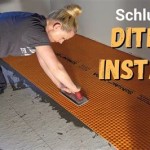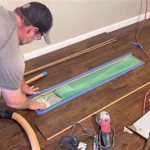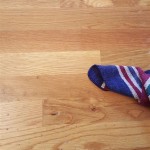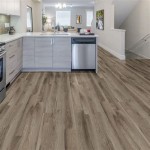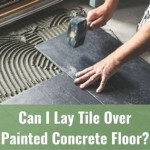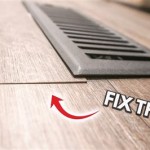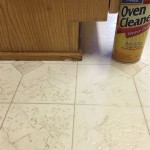Is Luxury Vinyl Plank Flooring Safe? A Comprehensive Examination
Luxury Vinyl Plank (LVP) flooring has surged in popularity as a durable, cost-effective, and aesthetically versatile alternative to hardwood, tile, and laminate. Its waterproof nature, ease of installation, and wide range of designs make it an appealing choice for homeowners and businesses alike. However, questions regarding the safety of LVP, specifically concerning its composition and potential for off-gassing, frequently arise. Determining the safety of LVP flooring involves a nuanced understanding of its manufacturing processes, the materials used, and the potential health impacts associated with its use.
The core of the debate surrounding LVP safety revolves around the chemicals used in its production. While LVP is generally considered safe for most applications, it's imperative to understand the potential risks and how to mitigate them. This article provides a comprehensive examination of the safety considerations associated with LVP flooring, addressing common concerns and offering guidance for making informed choices.
Understanding the Composition of Luxury Vinyl Plank Flooring
LVP flooring is not a monolithic product; it consists of multiple layers, each contributing to its overall performance and characteristics. Understanding these layers is crucial to assessing potential safety concerns.
Typically, LVP flooring comprises the following layers:
*Wear Layer:
This is the topmost layer, designed to protect the flooring from scratches, stains, and wear and tear. It's usually a clear, durable coating made from polyurethane or a similar material. The thickness of the wear layer directly impacts the flooring's longevity and resistance to damage. *Print Layer:
Located beneath the wear layer, the print layer is a high-resolution image that provides the flooring's aesthetic appeal, mimicking wood, stone, or tile. This layer is usually a photographic image printed onto a vinyl sheet. *Vinyl Core Layer:
This is the main structural component of LVP. It's typically made from polyvinyl chloride (PVC) or a similar vinyl composite. The core layer provides the flooring's rigidity, stability, and water resistance. Different types of cores exist, including rigid core (RVP), which offers enhanced structural stability, and flexible core, which is more pliable and easier to install. *Backing Layer:
This is the bottom layer of the flooring, designed to provide cushioning, sound absorption, and adhesion to the subfloor. It may be made from felt, foam, or another vinyl composite.The specific materials used in each layer, and the manufacturing processes employed, can significantly impact the potential for chemical emissions and overall safety.
Potential Health Concerns Associated with LVP Flooring
The primary health concerns associated with LVP flooring center around the potential emission of volatile organic compounds (VOCs) and the presence of phthalates. These substances, if present in sufficient quantities, can have adverse health effects.
Volatile Organic Compounds (VOCs):
VOCs are organic chemicals that evaporate at room temperature. Many common building materials, including flooring, can emit VOCs. Some VOCs are harmless, while others can cause short-term and long-term health problems. Short-term effects may include headaches, nausea, dizziness, and eye, nose, and throat irritation. Long-term exposure to certain VOCs has been linked to respiratory problems, neurological damage, and even cancer.The VOCs emitted by LVP flooring typically originate from the adhesives, coatings, and vinyl materials used in its construction. Formaldehyde, while less common in LVP than in some other types of flooring (such as laminate), can still be present in trace amounts. Other VOCs that may be emitted include benzene, toluene, ethylbenzene, and xylene (BTEX compounds), as well as various alcohols and aldehydes.
Phthalates:
Phthalates are plasticizers added to vinyl to make it more flexible and durable. Some phthalates have been linked to endocrine disruption, reproductive problems, and developmental issues, particularly in children. While the use of phthalates has been increasingly restricted in some countries, they may still be present in older or less regulated LVP flooring products.Heavy Metals:
Some older or less-regulated LVP flooring may contain trace amounts of heavy metals, such as lead or cadmium, used as stabilizers or pigments. Exposure to heavy metals can have serious health consequences, including neurological damage, kidney problems, and developmental issues.Other Concerns:
The manufacturing process of PVC can also generate dioxins and furans, which are highly toxic and persistent environmental pollutants. While these chemicals are not typically present in the finished flooring product, their release during manufacturing is a concern from an environmental and public health perspective.Strategies for Minimizing Risks and Choosing Safe LVP Flooring
Despite the potential health concerns associated with LVP flooring, several strategies can be employed to minimize risks and choose safer products. These strategies focus on selecting low-VOC options, ensuring proper ventilation, and considering alternative flooring materials.
Look for Low-VOC Certifications:
Several independent organizations offer certifications for flooring products that meet stringent VOC emission standards. When selecting LVP flooring, look for certifications such as: *FloorScore:
This certification ensures that the flooring product meets strict indoor air quality standards and emits very low levels of VOCs. *GREENGUARD Gold:
This certification indicates that the product has been tested for over 360 VOCs and meets even more stringent emission limits than standard GREENGUARD certification, making it suitable for use in schools, healthcare facilities, and other sensitive environments. *UL Environmental Claim Validation (ECV):
This certification verifies the product's environmental claims, including VOC emissions, recycled content, and recyclability.These certifications provide assurance that the flooring product has been independently tested and meets established standards for indoor air quality.
Consider Phthalate-Free Options:
Opt for LVP flooring products that are explicitly labeled as phthalate-free. Many manufacturers now offer phthalate-free alternatives that use alternative plasticizers that are considered safer.Proper Ventilation:
Adequate ventilation is crucial for minimizing exposure to VOCs emitted by any new flooring material. After installation, open windows and doors to ventilate the area thoroughly for several days to allow VOCs to dissipate. Consider using air purifiers with HEPA filters to further reduce VOC levels.Consider Alternative Flooring Materials:
If concerns about VOCs and phthalates are significant, consider alternative flooring materials such as: *Hardwood:
Solid hardwood flooring is a natural and durable option with low VOC emissions, provided it is finished with low-VOC sealants and adhesives. *Tile:
Ceramic and porcelain tile are inert materials that do not emit VOCs. However, the grout used to install tile may contain VOCs, so choose low-VOC grout options. *Linoleum:
Linoleum is a natural and sustainable flooring material made from linseed oil, wood flour, and other natural ingredients. It typically has low VOC emissions. *Cork:
Cork flooring is another natural and sustainable option that is naturally antimicrobial and hypoallergenic. It also has low VOC emissions.Research the Manufacturer:
Investigate the manufacturer's reputation and commitment to environmental sustainability and product safety. Look for companies that are transparent about their manufacturing processes and the materials used in their products.Acclimation Period:
Allow the LVP flooring to acclimate to the room's temperature and humidity for several days before installation. This can help reduce the potential for warping or expansion after installation and may also help reduce initial VOC emissions.Professional Installation:
Professional installation can ensure that the flooring is properly installed and that any adhesives or sealants used are applied correctly. Proper installation can also help prevent moisture problems that can contribute to mold growth and further compromise indoor air quality.Regular Cleaning:
Regularly clean the LVP flooring with a damp mop and a mild, pH-neutral cleaner. Avoid using harsh chemicals or abrasive cleaners, as these can damage the flooring and potentially release VOCs.Understanding the Warranty:
Carefully review the manufacturer's warranty to understand the product's performance and potential liabilities. A comprehensive warranty can provide assurance of the product's quality and durability.Consider Plank Thickness and Construction:
Thicker planks often indicate higher quality and potentially lower VOC emissions. Also, look for planks with a multi-layer construction, as this can help reduce the diffusion of VOCs from the core layer.Request Material Safety Data Sheets (MSDS):
Request the MSDS from the manufacturer for the specific LVP flooring product. The MSDS provides detailed information about the chemical composition of the product and potential health hazards.By following these strategies, individuals can significantly reduce the potential risks associated with LVP flooring and make informed choices about the safety of their indoor environment. It's important to remember that no flooring material is entirely risk-free, but by taking proactive steps, the risks can be minimized.

The Dangers Of Luxury Vinyl Floors Lvt And How You Can Avoid Them Artisan Wood Llc

What S Luxury Vinyl Flooring And Is It Waterproof America

The Dangers Of Luxury Vinyl Floors Lvt And How You Can Avoid Them Artisan Wood Llc

What I Ve Learned As An Inspector For Luxury Vinyl Flooring Wood Floor Business

Ask The Builder Luxury Vinyl Plank Flooring Is Remarkable Seattle Times

Are Vinyl Floors Toxic Olde Tyme Floor

Vinyl Flooring Pros And Cons Forbes Home

Why I Luxury Vinyl Flooring Lvt Lvp Bay On A Budget

Are Vinyl Floors Toxic Olde Tyme Floor

What I Ve Learned As An Inspector For Luxury Vinyl Flooring Wood Floor Business
See Also
